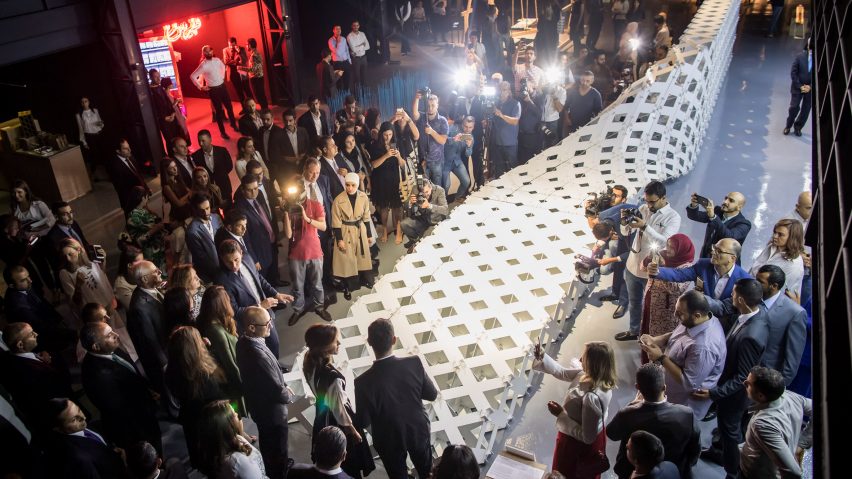
10 emerging Jordanian designers shaping the future of the Middle East
With Amman Design Week underway in the Jordanian capital, we're putting a spotlight on the region's rising talent, who are out in force at the young event.
Now in its second year, Amman Design Week (ADW) brings together designers from across the region, and aims to get the public involved in appreciating design in all its facets. The hub of the event is The Hangar, a cavernous former industrial space where displays range from abstract installations to products ready for mass manufacture, and from community projects to bricks made of biscotti.
Notably, a number of the exhibition's standout works have come from emerging designers, many of who have returned to Jordan after studying overseas, and are ready to inject their experience and ideas into the local industry.
"Since ours is a developing economy and an economy that has to rely on the ingenuity of its people, Amman Design Week has since its inception really billed itself as an educational platform," 2017 Hangar Exhibition curator Ahmad Humeid told Dezeen. "A lot of the local designers represented inside are not stars by any means — some of them, in fact, are fresh graduates displaying their first piece."
Here are ten emerging Jordanian designers to watch, all showing work in The Hangar until the close of ADW on 14 October 2017.
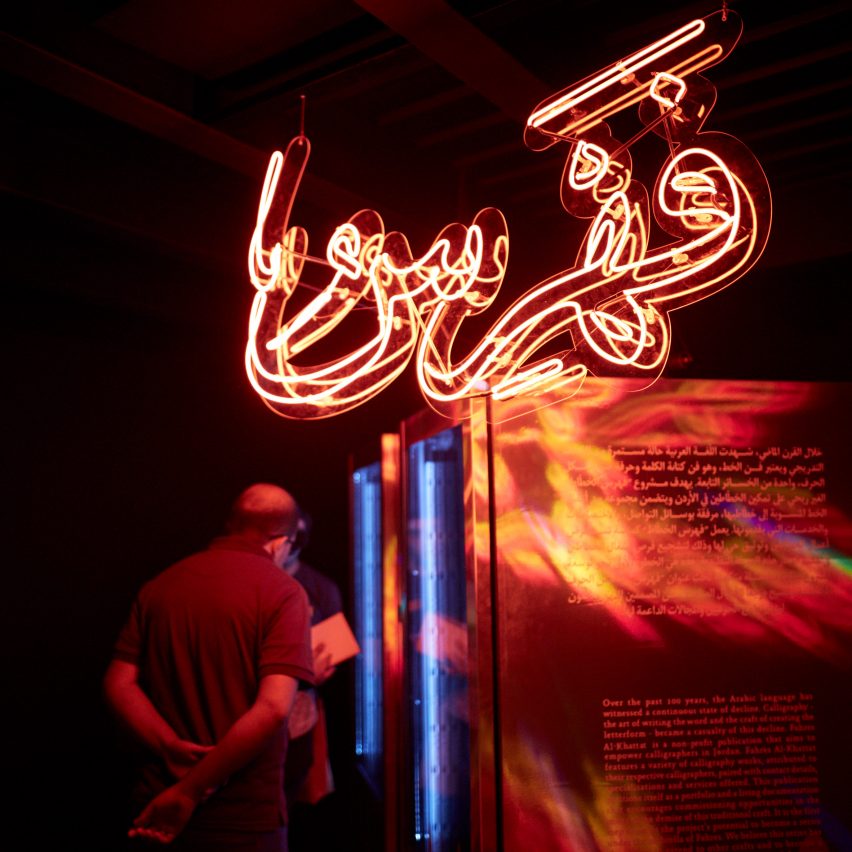
Yousef Abedrabbo and Omar Al-Zo'bi from Eyen
Yousef Abedrabbo and Omar Al-Zo'bi are the central figures behind Eyen, a multidisciplinary collective that works primarily in graphic design — a practice that in this region of the world frequently requires the use of Arabic calligraphy. To enable designers to find and collaborate with specialists in this ancient craft, Eyen created Fahres Al-Khattat, a directory-style publication that documents the works and contact details of Jordan's calligraphers.
At ADW, the collective is selling the publication through an interactive installation based around a vending machine. They're treating it as a form of crowdfunding, with proceeds going into extending the project into an online database.
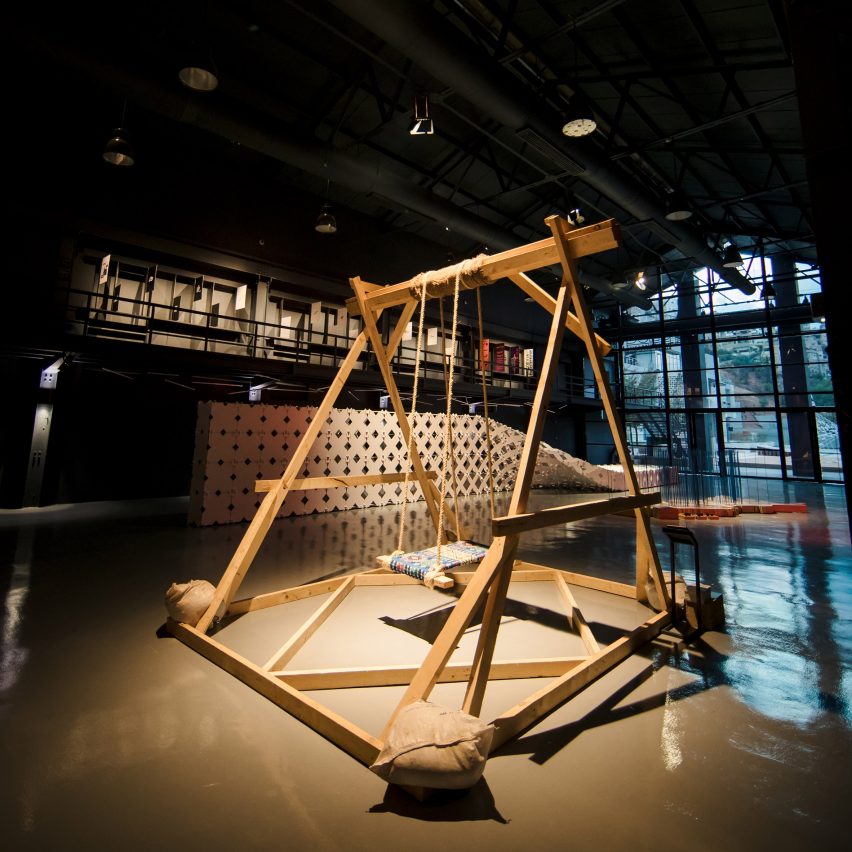
Yasmeen Sabri
25-year-old Yasmeen Sabri started off as a painter before undertaking a masters in Information Experience Design at London's Royal College of Art. She now focuses on creating interactive experiences, particularly ones with an activist or community-building purpose.
Her current project is Network of Swings, which sees her install iterations of a kind of playground equipment normally only seen in Jordan during the festive period of Eid. Currently, she has swings located at ADW exhibition venue The Hangar as well as the Zaatari refugee camp and a community centre in the underprivileged Amman neighbourhood of Jabal al Natheef. Sabri's intervention sees these familiar-looking swings connected via live video stream, in an attempt to "unify people through the language of play".
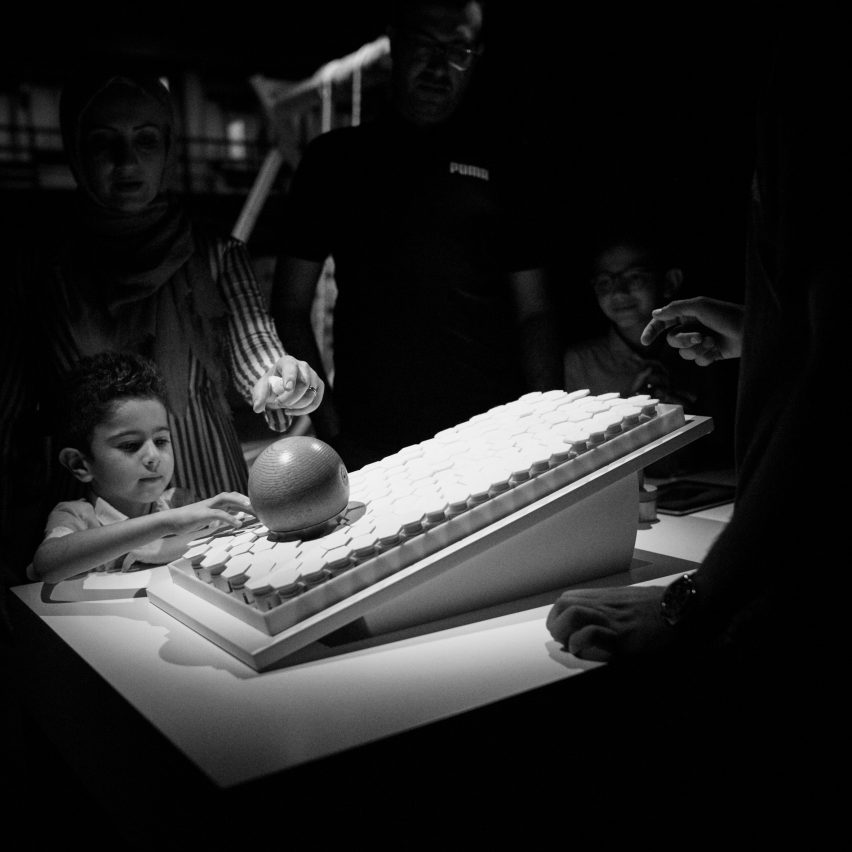
Sahar Madanat
Sahar Madanat is a product designer who has previously taken home a Red Dot Award, International Design Excellence Award and Spark Award. She founded her Amman-based studio in 2013 and focuses on projects that "aim to improve the quality of life".
An example of this is her Pushpin Dynamic Surface, which is on display within The Hangar. The surface is composed of small hexagonal tiles that push down in response to pressure. This allows an object or person to be supported in place even when tilted — providing a possible aid for the elderly, as well as a reusable solution for packaging and shipping.
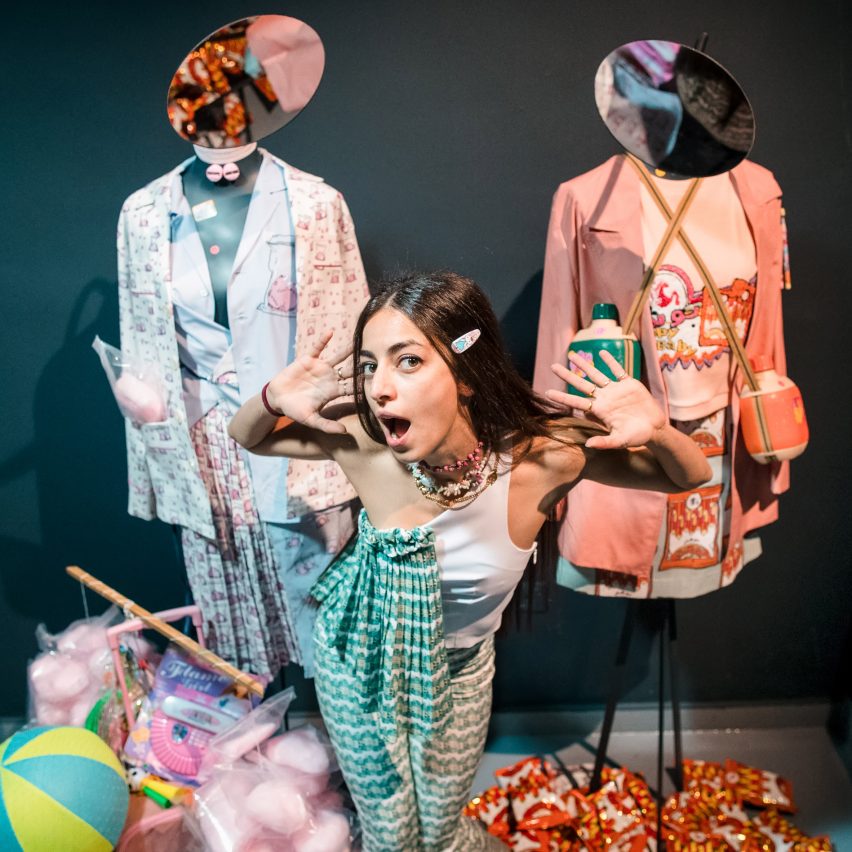
Tania George
Fashion designer Tania George graduated from Italian school Polimoda in 2011 and went on to work at textile makers Stamperia Fiorentina before returning to her native Jordan. Prints continue to form a big part of her work, which is recognisable for its playful use of iconography from Jordanian popular culture — like Ammani taxis, municipal trucks and food packets.
George is previewing her third ready-to-wear collection — titled Shibs, Bibs, Canary — at The Hanger, where items are presented surrounded by the miscellanea that inspired them. She also has a pop-up shop in the trendy neighbourhood of Weibdeh.
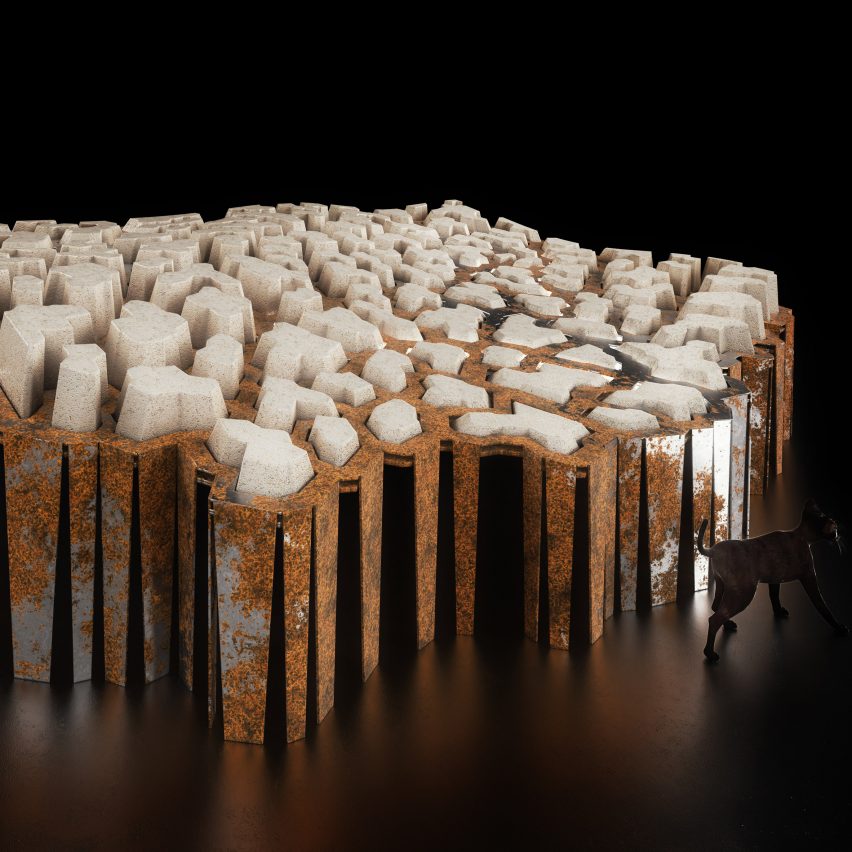
Riyad and Hashem Joucka from the Middle East Architecture Network (MEAN)
Brothers Riyad and Hashem Joucka both work at the intersection of architecture, design and new technologies, and have set up the Middle East Architecture Network (MEAN) to pursue projects that involve computational design, robotics and new materials.
Riyad Joucka's first project with the practice is Arid, a jigsaw-like installation displayed in front of The Hangar. Designed to call attention to the problem of water scarcity in Jordan, the sculpture features local stone milled into shapes generated by the algorithm that represents how the earth cracks during drought. Separate to his work with MEAN, Hashem Joucka is showing Ferromancy, three installations that allow visitors to interact with ferrofluid — metal-containing liquids that respond to magnets.
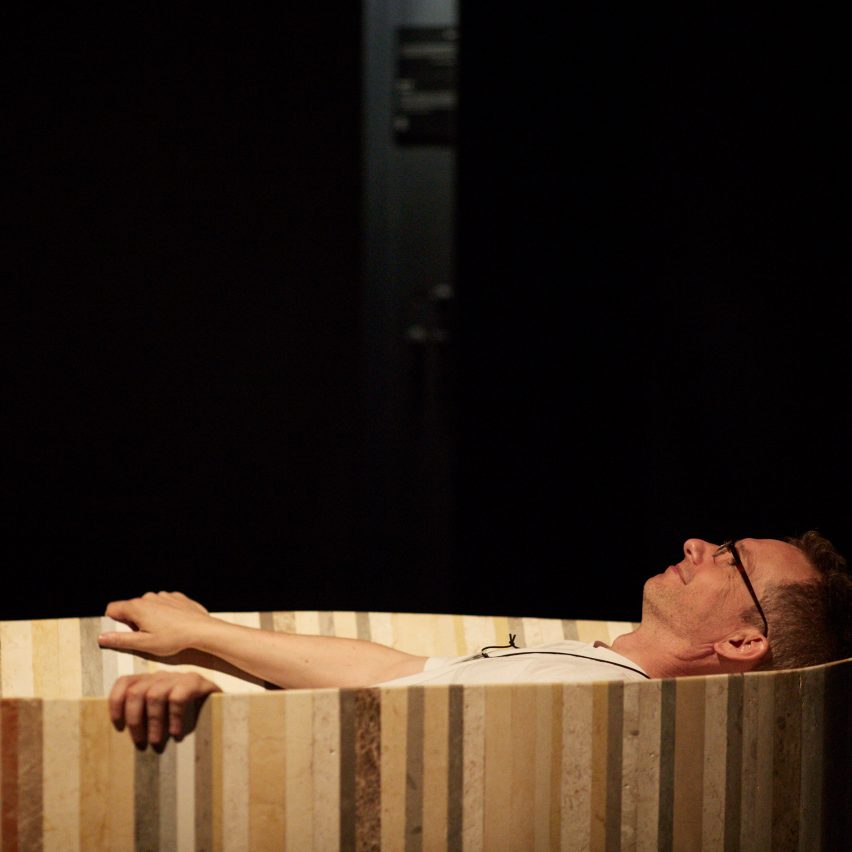
Rula Yaghmour
Lead designer at her family's firm, Yaghmour Architects, Rula Yaghmour, 32, studied architectural engineering at the Jordan University of Science and Technology and these days regularly makes sculptural design objects. The combination of these interests led to her current project, Kutleh (Arabic for "block"), a new layered stone material made from offcuts from construction sites.
Yaghmour intends to make blocks of the material available to buy in various sizes and colour combinations. At ADW, she is presenting a Kutleh chair with a hyperbolic form modelled after the work of Roni Horn.
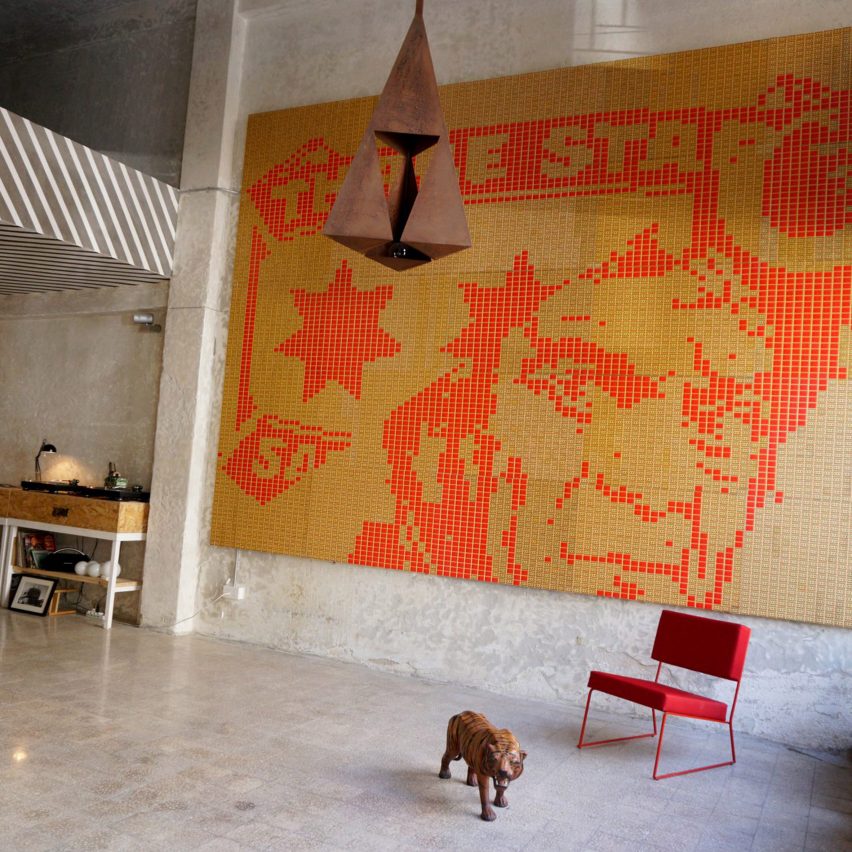
Saeed Abu-Jaber and Mothanna Hussein from Turbo
Turbo is another multidisciplinary studio working primarily in the branding and graphic design space — one of the Jordanian industry's strengths. Their design work often incorporates illustration and infographic elements, while their studio space — set in a downtown shopfront that's open to the street — aims to invigorate both their practice and the community around them.
An example of Turbo's work is included in a section of The Hangar exhibit devoted to branding, while the designers have created a five-metre-wide installation composed entirely of Three Stars matchboxes for their own studio.